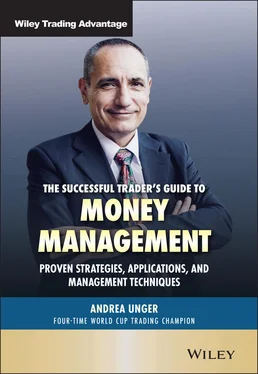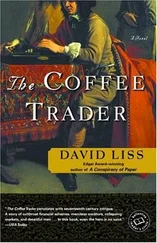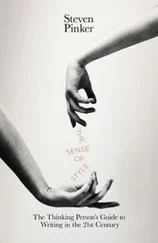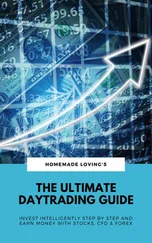224 216
225 217
226 218
227 219
228 220
229 221
230 222
231 223
232 224
233 225
234 226
235 227
236 228
237 229
238 230
239 231
240 232
241 233
242 234
243 235
244 236
245 237
246 238
247 239
248 240
249 241
250 242
251 243
252 244
253 245
254 246
255 247
256 248
257 249
258 250
259 251
260 252
261 253
262 254
263 255
264 256
265 257
266 258
267 259
268 260
269 261
270 262
271 263
272 264
273 265
274 266
275 267
276 268
277 269
278 270
279 271
280 272
281 273
282 274
283 275
284 276
285 277
286 278
287 279
288 280
289 281
290 282
291 283
292 284
293 285
294 286
295 287
296 288
297 289
298 291
299 292
300 293
301 294
302 295
303 296
304 297
305 298
306 299
307 300
308 301
309 302
310 303
The Successful Trader's Guide to Money Management
Proven Strategies, Applications, and Management Techniques
Andrea Unger

This edition first published 2021
© 2021 John Wiley & Sons, Ltd
Registered office
John Wiley & Sons Ltd, The Atrium, Southern Gate, Chichester, West Sussex, PO19 8SQ, United Kingdom
For details of our global editorial offices, for customer services and for information about how to apply for permission to reuse the copyright material in this book please see our website at www.wiley.com.
All rights reserved. No part of this publication may be reproduced, stored in a retrieval system, or transmitted, in any form or by any means, electronic, mechanical, photocopying, recording or otherwise, except as permitted by the UK Copyright, Designs and Patents Act 1988, without the prior permission of the publisher.
Wiley publishes in a variety of print and electronic formats and by print‐on‐demand. Some material included with standard print versions of this book may not be included in e‐books or in print‐on‐demand. If this book refers to media such as a CD or DVD that is not included in the version you purchased, you may download this material at http://booksupport.wiley.com. For more information about Wiley products, visit www.wiley.com.
Designations used by companies to distinguish their products are often claimed as trademarks. All brand names and product names used in this book are trade names, service marks, trademarks or registered trademarks of their respective owners. The publisher is not associated with any product or vendor mentioned in this book.
Limit of Liability/Disclaimer of Warranty: While the publisher and author have used their best efforts in preparing this book, they make no representations or warranties with respect to the accuracy or completeness of the contents of this book and specifically disclaim any implied warranties of merchantability or fitness for a particular purpose. It is sold on the understanding that the publisher is not engaged in rendering professional services and neither the publisher nor the author shall be liable for damages arising herefrom. If professional advice or other expert assistance is required, the services of a competent professional should be sought.
Library of Congress Cataloging‐in‐Publication Data is Available
ISBN 978‐1‐119‐79880‐4 (hardback)
ISBN 978‐1‐119‐79882‐8 (ePub)
ISBN 978‐1‐119‐79881‐1 (ePDF)
Cover Design: Wiley
Cover Image: © Andrea Unger
For the members of my family, who have always stood beside me and offered their support every day, also when taking the most difficult decisions.
The second millennium began with the explosion of online trading in Europe, as the increase in the amount of available information and advertising of various kinds goes to show, encouraging many to try their luck at trading on the financial markets.
A considerable number of brokers set up shop and offered their services both for trading online and speculation on the markets, and new books are published almost every day, written by expert traders giving a great deal of advice on how to win on the markets. There are dozens of books on scalping, more on speculation in general, and even more on trading systems, not to mention those on technical analysis and even a few on trading psychology. An expert trader following the continuous evolution of these publications can't help but notice that (in Europe) one thing that's missing is a book that explains a subject that's by far the most important for he or she who wants to make trading their profession, in other words: money management (hereinafter referred to simply as M.m.).
In this book the author explains all the important points of how to manage your own capital in detail in consideration of the risk and the far‐from‐remote possibility that you might lose everything before you've even learnt how to place consistently winning trades on the market.
The author has explained the subject in a clear and frank way, making the book suitable for beginners and expert traders alike, and with the obstinacy of someone who's learned their lessons firsthand in the field he repeatedly emphasizes the importance of applying the right money management techniques. It would be a shame not to make the most of all the secrets this book has to offer.
The author's desire to help the reader understand that money management isn't the same as using a stop‐loss can be found in every chapter. Also, the various methods discussed throughout the book, which are intrinsic to the strategies that can be applied to manage assets, let the trader prepare a plan of action for their M.m. that's as close as possible to perfect.
Anyone who reads this book will realise that technical analysis, trading systems, and various methods – no matter how valid they may be – are all but worthless without the effective management of your assets, and it would be a real shame if the reader failed to make the effort to apply some of the numerous suggestions they could make on their own after reading the book. The author, however, advises against using a poor strategy with the meticulous application of M.m. even if that can produce acceptable results, and this should perhaps make us reflect on the fact that the correct application of M.m., as well as protecting yourself from the risk of going bankrupt, can also help you obtain spectacular results that would be impossible without correct money management.
I love reading books on trading (I don't think many people have a collection as vast as mine on the subject), and I can truly say this book on money management is a must, and is the first complete and clear book to come out of Italy on how to apply M.m. to financial markets. I was lucky enough to be given the chance to read it first, and made good use of numerous suggestions to manage some futures' trading strategies, so I must compliment the author on the excellent work he's done in creating a book that's a real one of a kind – a book readers would do well to read and read again, always keeping it on hand to use as a point of reference to dispel any doubts on the correct way to manage the method they're adopting.
Domenico Foti
The trading world has changed considerably over the last two decades, and online trading has gradually transformed the sector from specialised to ‘DIY’, expanding to become so widespread it's now within reach of the investor from the comfort of his or her own home. The 1999 dot.combubble made investing on the stock exchange more enticing than ever, with people dreaming of getting rich quick in a world that once mostly consisted of Treasury bills and bonds. When the bubble burst in spring 2000, it was, to say the least, painful for most of those who'd ventured into speculating on the stock exchange, and produced a variety of effects, leaving its mark also on those who weren't literally swept away by the crash.
Читать дальше













